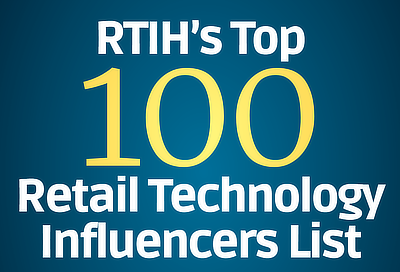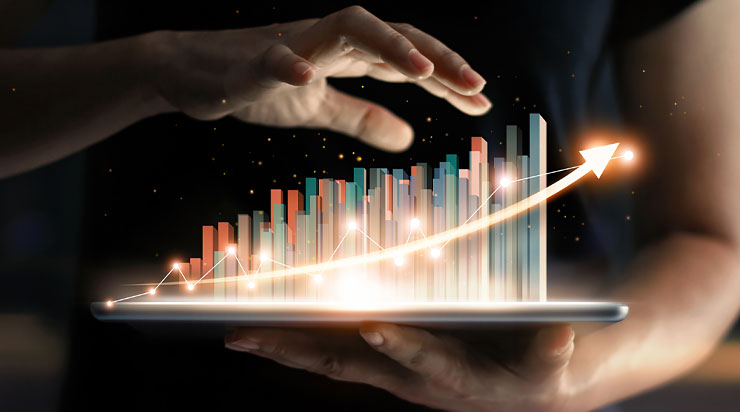Infographics
- June 15, 2020
How retail edge and IoT solutions improve customer experience
Playing a central role in making this possible is the convergence of artificial intelligence, edge computing (which enables processing closer to the source), and Internet of Things solutions, among others. Consumers today: 81% research purchases online; 64% happy for retailers to use data to enhance experience (so long as you look after it); 51% would abandon retailer after 1-2 bad experiences. -from RTInsights
- June 08, 2020
Opinions on Cashless Society During COVID-19
As fears over the coronavirus pandemic continue to permeate day to day life in the U.S., one concern is how comfortable people are using paper money. Given the new normal our world is adjusting to, we checked in on how U.S. adults feel about a cashless society. -from CivicScience
- June 01, 2020
The Road to Recovery: Which Economies are Reopening? -VisualCapitalist
COVID-19 has brought the world to a halt—but after months of uncertainty, it seems that the situation is slowly taking a turn for the better. In general, the higher the mobility rate, the more economic activity this signifies. In most cases, mobility rate also correlates with a higher rate of recovered people in the population. -from visualcapitalist.com
- May 25, 2020
Mapped: The State of Facial Recognition Around the World -VisualCapitalist
USA Dept. of Homeland Security aims to use facial recognition technology on nearly all air travel passengers by 2023. 59% of Americans in favor of implementing facial recognition technology, considering it acceptable for use in law enforcement. Belgium and Luxembourg are two of only three governments in the world to officially oppose the use of facial recognition. -from VisualCapitalist
- May 17, 2020
How Many People Die Each Day? -VisualCapitalist
Nearly 150,000 people die per day worldwide. While it’s impossible to know the true death toll of COVID-19, it is clear that in some countries daily deaths have reached rates 50% or higher than the historical average for periods of time. -from VisualCapitalist
- May 11, 2020
How COVID-19 is Fundamentally Altering Retail Store Operations -Bain Insights
Many retailers face a post-pandemic moment of truth. Four priorities for retailers in a post-COVID-19 world. Simply and digitalize end-to-end processes, accelerating timeline 2-3 years. -from Bain Insights
- May 04, 2020
14 Common Coronavirus Myths Busted -Visualistan
As the Coronavirus epidemic continues to spread globally, social media posts and news articles concerning the outbreak are also surfacing. Which of these do you believe? -from Visualistan
- April 27, 2020
The Connected Consumer -RISnews
- April 20, 2020
Visualizing the Length of the Fine Print, for 14 Popular Apps -VisualCapitalist
97% of us don't read them. The service agreement for Microsoft stands out at the top of the list with an agreement that would take over an hour to read — a bit less time than it would take to read Shakespeare’s Macbeth. To be fair, this service agreement does seem to cover the company’s entire suite of products. -from VisualCapitalist
- April 12, 2020
COVID-19The Pandemic Economy: What are Shoppers Buying Online During COVID-19? -Visual Capitalist
With online retail sales estimated to reach an eye-watering $6.5 trillion by 2023, the ecommerce sector was already booming. Many consumers are also using their newfound time to focus on their health, with 85% of consumers taking up some kind of exercise while in social isolation, and 40% of them saying they intend to keep it up when restrictions are lifted. -from VisualCapitalist
- April 05, 2020
The 7 COVID-19 Best Resources We've Discovered so far - Visual Capitalist
How Coronaviruses work - The History of Pandemics - Coronavirus Simulator: Limiting the Exponential Threat - Real Time COVID-19 Map - Which Countries are Flattening the Curve - Tracking the Coronavirus: The Latest Figures - COVID-19 Stats and Research -from visualcapitalist
- March 29, 2020
COVID-19 Crash: How China’s Economy May Offer a Glimpse of the Future -VisualCapitalist
On the bright side, some analysts are forecasting a recovery as early as the third quarter of 2020. A variety of factors, such as government stimulus, consumer confidence, and the number of COVID-19 cases, will play into this timeline. -from visualcapitalist.com
- March 22, 2020
Technology Trends to Follow in 2020 -readwrite.com
84% businesses AI will enable reach or sustain competitive advantage. 80% of retailers will use IoT to customize store visits by 2021. 32% of retailers expect to add AR/VR for enhanced product experience in 3 years. -from readwrite.com
- March 15, 2020
Visualizing the History of Pandemics -VisualCapitalist
The more civilized humans became – with larger cities, more exotic trade routes, and increased contact with different populations of people, animals, and ecosystems – the more likely pandemics would occur. -from VisualCapitalist.com
- March 08, 2020
How People Around the World Shop Online -Visually
More than 50% of the global online population have shopped online more than once. How big is global ecommerce? What are we buying online? What percentage of purchases are socially influenced? -from Visual.ly
Page 14 of 33
















